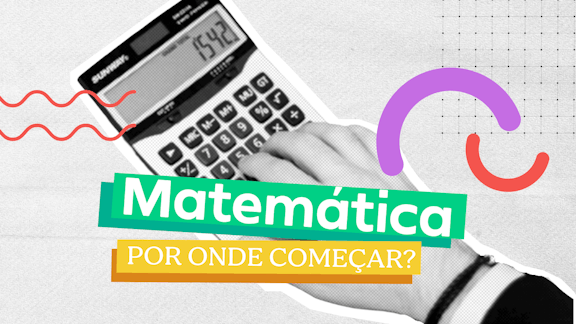The words “roughly" (line 11), “lighter" (line 10), “nearby" (line 21) and “Plus" (line 10) are used in the text as:
Read the Text 2 and answer the questions from 46 to 50.
TEXT 2
Pros and Cons of Nuclear Power
Sergei Supinsky: This storage facility near the site of the Chernobyl Nuclear Power Plant
currently houses nuclear waste.
What's nuclear power's biggest advantage? It doesn't depend on fossil fuels and isn't
affected by fluctuating oil and gas prices. Coal and natural gas power plants emit carbon
dioxide into the atmosphere, which contributes to climate change. With nuclear power plants,
CO2 emissions are minimal.
According to the Nuclear Energy Institute, the power produced by the world's nuclear plants
would normally produce 2 billion metric tons of CO2 per year if they depended on fossil fuels.
In fact, a properly functioning nuclear power plant actually releases less radioactivity into the
atmosphere than a coal-fired power plant. Plus, all this comes with a far lighter fuel
requirement. Nuclear fission produces roughly a million times more energy per unit weight
than fossil fuel alternatives.
And then there are the negatives. Historically, mining and purifying uranium hasn't been a
very clean process. Even transporting nuclear fuel to and from plants poses a contamination
risk. And once the fuel is spent, you can't just throw it in the city dump. It's still radioactive
and potentially deadly.
On average, a nuclear power plant annually generates 20 metric tons of used nuclear fuel,
classified as high-level radioactive waste. When you take into account every nuclear plant on
Earth, the combined total climbs to roughly 2,000 metric tons a year. All of this waste emits
radiation and heat, meaning that it will eventually corrode any container that holds it. It can
also prove lethal to nearby life forms. As if this weren't bad enough, nuclear power plants
produce a great deal of low-level radioactive waste in the form of radiated parts and
equipment.
Over time, spent nuclear fuel decays to safe radioactive levels, but this process takes tens of
thousands of years. Even low-level radioactive waste requires centuries to reach acceptable
levels. Currently, the nuclear industry lets waste cool for years before mixing it with glass
and storing it in massive cooled, concrete structures. This waste has to be maintained,
monitored and guarded to prevent the materials from falling into the wrong hands. All of
these services and added materials cost money -- on top of the high costs required to build a
plant.
Disponível em:
Acesso em: abr. 2011.
TEXT 2
Pros and Cons of Nuclear Power
Sergei Supinsky: This storage facility near the site of the Chernobyl Nuclear Power Plant currently houses nuclear waste. What's nuclear power's biggest advantage? It doesn't depend on fossil fuels and isn't affected by fluctuating oil and gas prices. Coal and natural gas power plants emit carbon dioxide into the atmosphere, which contributes to climate change. With nuclear power plants, CO2 emissions are minimal. According to the Nuclear Energy Institute, the power produced by the world's nuclear plants would normally produce 2 billion metric tons of CO2 per year if they depended on fossil fuels. In fact, a properly functioning nuclear power plant actually releases less radioactivity into the atmosphere than a coal-fired power plant. Plus, all this comes with a far lighter fuel requirement. Nuclear fission produces roughly a million times more energy per unit weight than fossil fuel alternatives. And then there are the negatives. Historically, mining and purifying uranium hasn't been a very clean process. Even transporting nuclear fuel to and from plants poses a contamination risk. And once the fuel is spent, you can't just throw it in the city dump. It's still radioactive and potentially deadly. On average, a nuclear power plant annually generates 20 metric tons of used nuclear fuel, classified as high-level radioactive waste. When you take into account every nuclear plant on Earth, the combined total climbs to roughly 2,000 metric tons a year. All of this waste emits radiation and heat, meaning that it will eventually corrode any container that holds it. It can also prove lethal to nearby life forms. As if this weren't bad enough, nuclear power plants produce a great deal of low-level radioactive waste in the form of radiated parts and equipment. Over time, spent nuclear fuel decays to safe radioactive levels, but this process takes tens of thousands of years. Even low-level radioactive waste requires centuries to reach acceptable levels. Currently, the nuclear industry lets waste cool for years before mixing it with glass and storing it in massive cooled, concrete structures. This waste has to be maintained, monitored and guarded to prevent the materials from falling into the wrong hands. All of these services and added materials cost money -- on top of the high costs required to build a plant. Disponível em: Acesso em: abr. 2011.
Gabarito comentado
Resposta correta: A
Tema central: identificação da classe gramatical (part of speech) de palavras no contexto. Concursos costumam cobrar análise por posição, morfologia (-ly, -er) e função na frase.
Resumo teórico rápido:
- Advérbio: modifica verbo, adjetivo ou outro advérbio; muitos terminam em -ly (ex.: quickly, roughly). (Fonte: Cambridge Dictionary)
- Adjetivo comparativo de superioridade: indica comparação (mais/menos). Em adjetivos curtos, forma-se com -er (ex.: lighter = mais leve). Superlativo termina em -est (lightest).
- Adjetivo: modifica substantivo (proximidade: nearby life forms = formas de vida próximas).
- Conjunção/connector: palavras que ligam ideias; “plus” pode funcionar como conjunção informal/discourse connector equivalendo a “in addition”. (Fonte: Cambridge Dictionary)
Justificativa da alternativa A (detalhada):
- “roughly”: advérbio de grau/maneira (modifica o numeral “a million times” / o verbo “produces”): classifica-se claramente como adverb.
- “lighter”: aparece em “far lighter fuel requirement” — é comparação (mais leve do que alternativas). Forma curta com -er, logo comparative of superiority (adjetivo comparativo).
- “nearby”: antepõe-se ao substantivo “life forms” e descreve localização; função de adjective.
- “Plus”: inicia a frase para adicionar informação (“Além disso”); aqui atua como conector = conjunction (registro informal/discourse).
Análise das alternativas incorretas:
- B: erra ao chamar “lighter” de superlative (seria “lightest”) e “nearby” como advérbio (aqui é adjetivo).
- C: classifica “roughly” como conjunction e “lighter” como comparative of inferiority — incorreto em ambos; “Plus” não é advérbio puro neste uso.
- D: “subjunctive” e “preposition” aplicados às palavras não batem com o uso real (nenhuma delas é subjuntivo; “nearby” não é preposição aqui).
- E: mistura erros (p.ex. “lighter” não é superlative; “Plus” não é preposição aqui).
Dicas de prova:
- Procure sufixos (-ly, -er, -est). Observe posição (antes do substantivo = adjetivo). Analise função contextual (liga ideias = conjunction).
Gostou do comentário? Deixe sua avaliação aqui embaixo!






